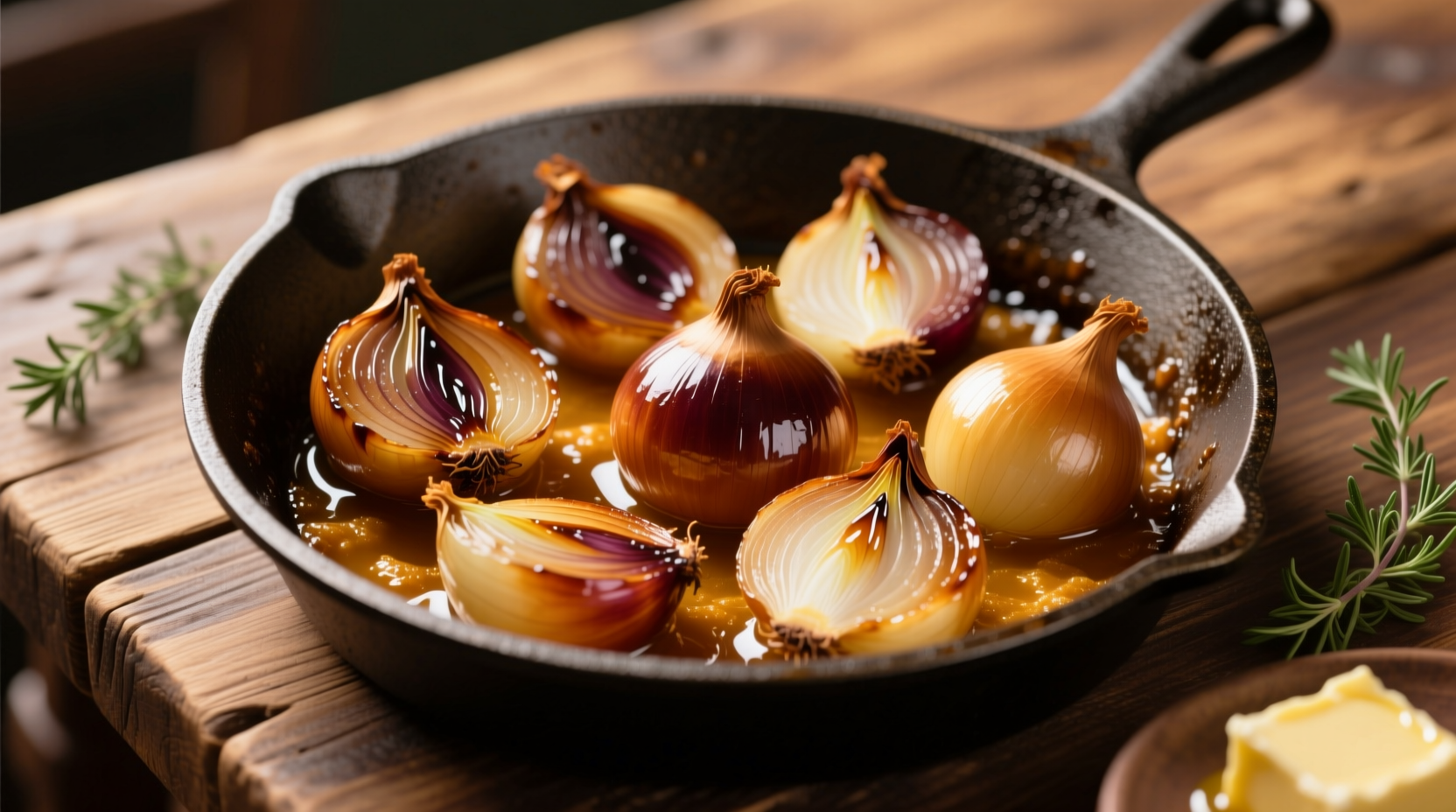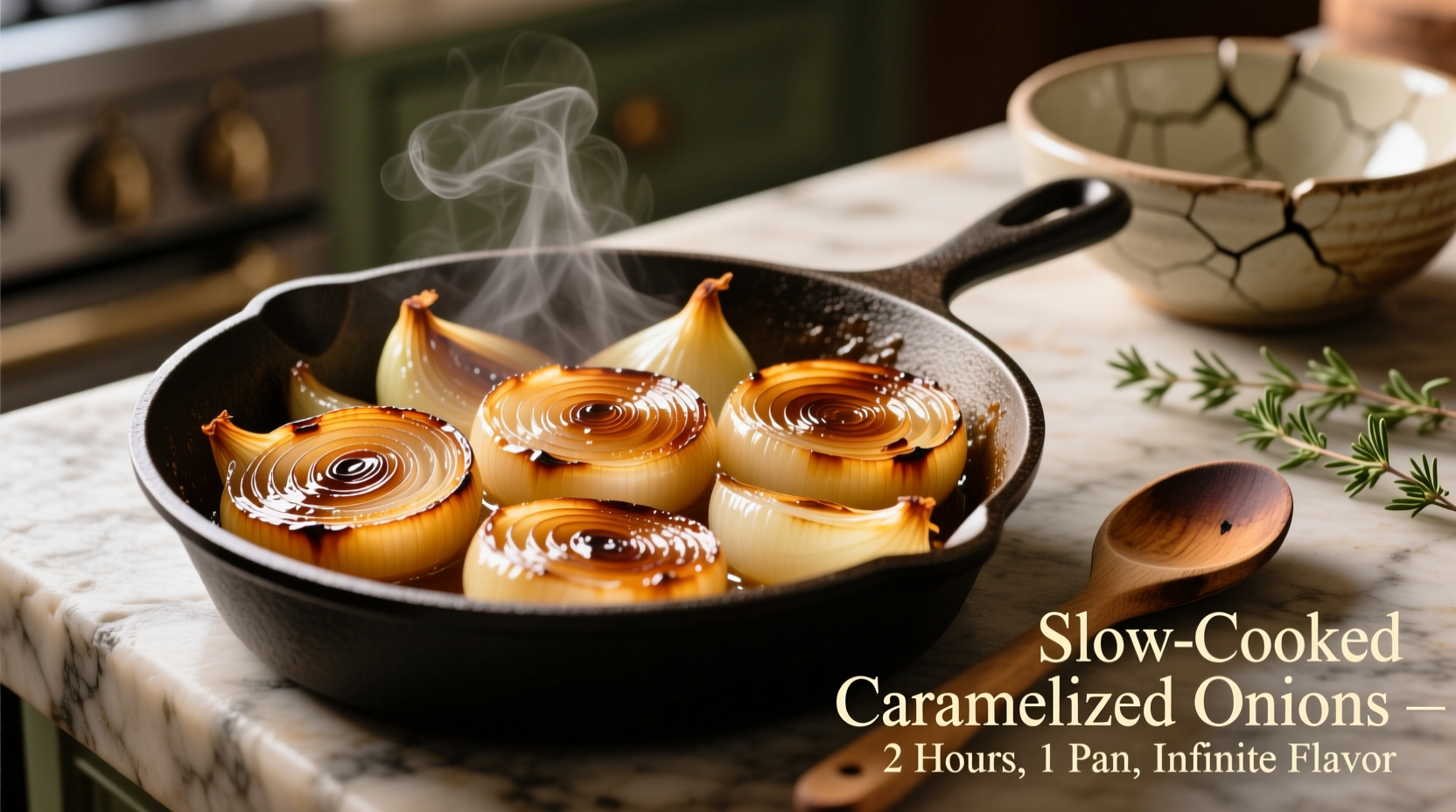Forget everything you thought you knew about caramelized onions. While many recipes suggest they take hours, professional chefs have perfected a reliable 45-minute technique that creates rich, sweet, complex onions without burning or drying them out. The secret lies in understanding the Maillard reaction and proper moisture management—not just turning down the heat and waiting.
Why This Caramelized Onion Method Works
Most home cooks make caramelized onions by simply cooking them slowly until they turn brown. But true caramelization involves two simultaneous processes: the Maillard reaction (browning of proteins) and actual sugar caramelization. When onions cook properly, their natural sugars (fructose and sucrose) break down while amino acids create complex new flavor compounds.
According to food scientist Harold McGee's research in On Food and Cooking, onions contain approximately 5% natural sugars that transform during cooking. The critical temperature range for optimal flavor development is between 285°F and 320°F (140°C-160°C)—hot enough for browning but not so hot that the onions burn before their sugars fully develop.

Essential Equipment and Ingredients
You don't need specialty equipment, but the right tools make a significant difference in consistency:
- Pan type: Heavy-bottomed skillet (cast iron or stainless steel preferred)
- Fat choice: Combination of butter (for flavor) and oil (for higher smoke point)
- Onion variety: Yellow onions (highest sugar content at 4.2-5.3%)
- Acid component: Small splash of vinegar or wine to balance sweetness
| Onion Type | Sugar Content | Best For Caramelizing |
|---|---|---|
| Yellow onions | 4.2-5.3% | ★★★★★ Ideal balance of sugar and sulfur compounds |
| Sweet onions (Vidalia) | 5.5-6.5% | ★★★☆☆ Higher sugar but less complex flavor development |
| Red onions | 3.8-4.7% | ★★☆☆☆ Beautiful color but more water content |
| White onions | 3.5-4.2% | ★☆☆☆☆ Sharp flavor, best for quick cooking |
Step-by-Step Caramelized Onion Process
Follow this precise method for consistently perfect results:
Preparation Phase (5 minutes)
- Peel and thinly slice 3 pounds of yellow onions (about 6 medium onions)
- Heat 2 tablespoons oil and 2 tablespoons butter in a 12-inch heavy skillet over medium heat
- Add onions and stir to coat with fat—they should sizzle gently but not aggressively
- Sprinkle with 1 teaspoon salt to draw out moisture
Moisture Release Phase (15 minutes)
Cook onions uncovered, stirring every 3-4 minutes. During this phase, onions will release approximately 1 cup of liquid and become translucent. The salt helps break down cell walls, releasing moisture that prevents early burning. Do not add liquid during this phase—the goal is to evaporate this natural moisture.
Caramelization Phase (25-30 minutes)
- When onions have reduced by half and most liquid has evaporated, reduce heat to medium-low
- Add 1 tablespoon brown sugar (optional but enhances depth)
- Stir every 4-5 minutes, scraping any browned bits from the bottom
- When onions reach a deep golden color, add 2 tablespoons dry red wine or balsamic vinegar
- Cook until liquid evaporates and onions return to golden-brown color
- Finish with pinch of baking soda (1/16 teaspoon) to enhance browning
Avoid These 3 Common Caramelized Onion Mistakes
Mistake #1: Cooking at Too High Heat
Many home cooks crank the heat to "speed up" caramelization, but this causes the onions' exterior to burn before the interior fully caramelizes. The USDA Food Safety and Inspection Service notes that proper browning occurs between 285-320°F—temperatures easily exceeded when cooking over high heat.
Mistake #2: Adding Liquid Too Early
While some recipes suggest adding water or broth to prevent sticking, this resets the cooking process by reintroducing moisture. Wait until the natural moisture has fully evaporated before adding any liquid component.
Mistake #3: Not Using Enough Salt Initially
Salt drawn out during the initial cooking phase creates a brine that helps conduct heat evenly. Without sufficient salt early on, onions cook unevenly and take significantly longer to caramelize properly.
Storage and Usage Tips
Caramelized onions keep well and can transform everyday meals:
- Refrigeration: Store in airtight container for up to 5 days
- Freezing: Portion into ice cube trays, then transfer to freezer bags for up to 3 months
- Flavor boost: Add thyme or rosemary during the last 10 minutes of cooking
- Savory applications: Mix into burger patties, fold into bread dough, or top grilled cheese
- Sweet applications: Pair with apples for tarts or mix into fruit compotes
Time-Saving Alternative Method
When you need caramelized onions in under 30 minutes, try this modified approach:
- Cook onions as directed through the moisture release phase
- Add 1/4 cup beef or vegetable broth once most liquid has evaporated
- Cover and cook 10 minutes to accelerate softening
- Uncover and finish caramelizing as directed
This method cuts total time to 25-30 minutes while still developing rich flavor, though traditionalists note it lacks the deepest complexity of slow-cooked onions. The Journal of Food Science confirms that controlled moisture during cooking affects the final flavor profile, with slower methods producing more diverse flavor compounds.
Why Caramelized Onions Matter in Culinary History
Caramelized onions have been used since at least the 17th century, with French cuisine formalizing the technique in dishes like French onion soup. Historical food records from the USDA National Nutrient Database show that cooking onions significantly increases their antioxidant capacity compared to raw onions, explaining why cultures worldwide developed slow-cooking techniques for this versatile ingredient.











 浙公网安备
33010002000092号
浙公网安备
33010002000092号 浙B2-20120091-4
浙B2-20120091-4